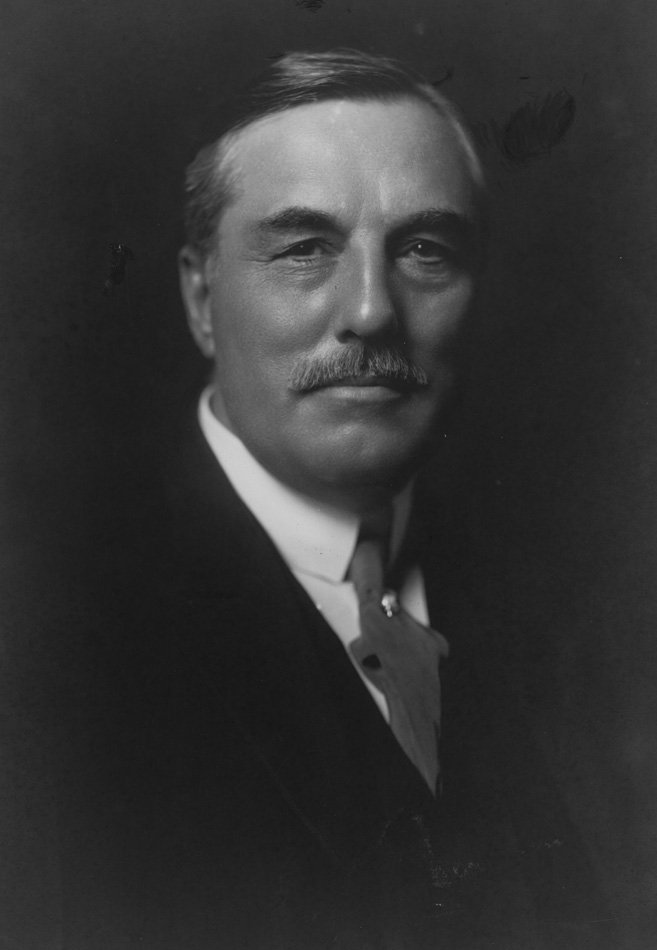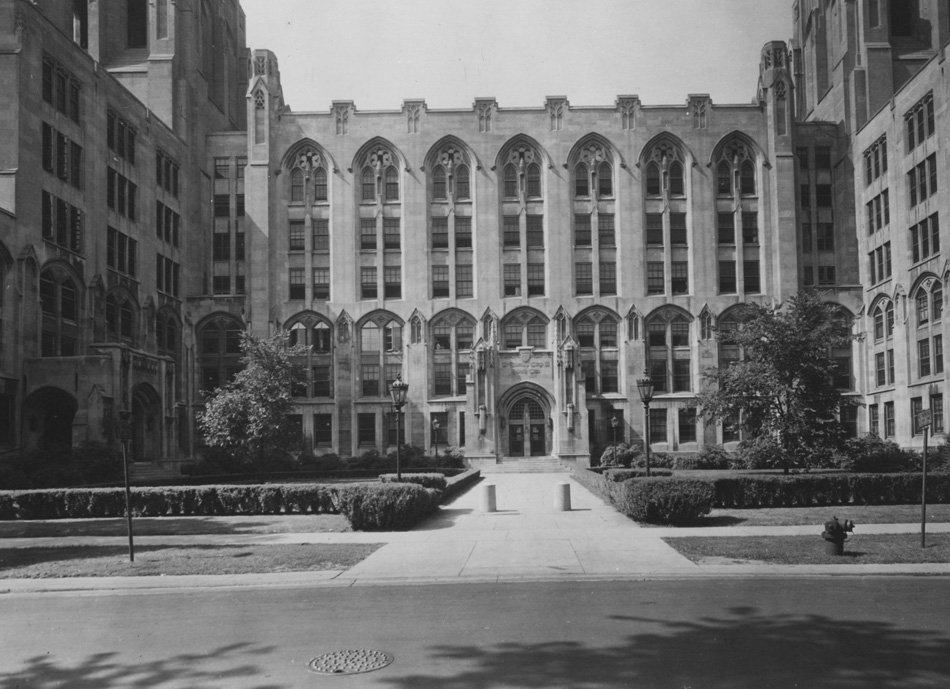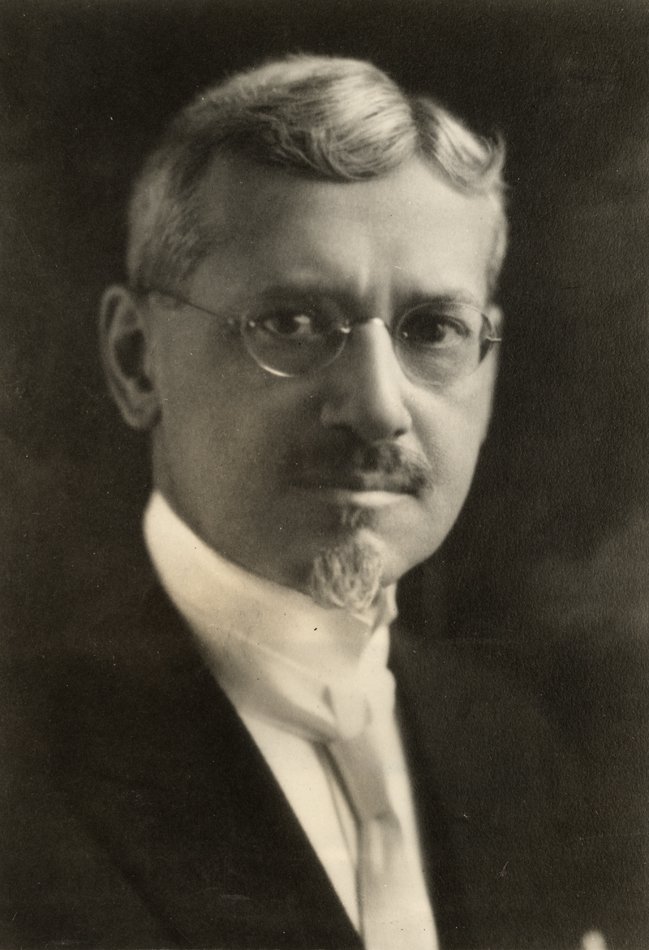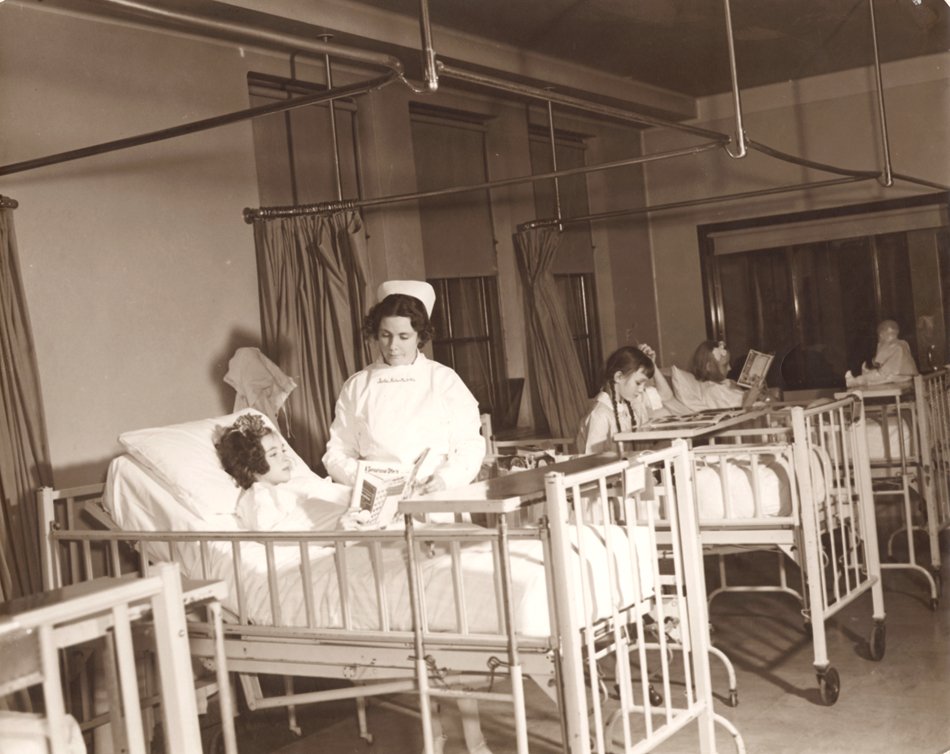Developing the Medical Center
Thanks to the spirit of Ernest Burton's bold development campaign, the University's hospitals and clinics enjoyed ample funding after 1925. Given the importance of creating a nationally significant medical center and hospital complex in Chicago, donors and University officials emphasized the cause of medical research and quality health care. Such attention paid off, and by the late 1920s the first stages of the University's massive medical building program were reaching completion.
The achievements of the later 1920s grew from the promising accomplishments of the preceding decade, most notably the commitment of the family of Albert Merritt Billings in 1916 to erect a large hospital building on the University campus. Albert Billings' son, C. K. G. Billings, was the family's principal donor, but his cousin Dr. Frank Billings (the Dean of Rush Medical College), brother-in-law Charles H. Ruddock, and nephew Albert M. B. Ruddock also participated in the plan. In all, members of the Billings family gave more than $1 million to found the University of Chicago Medical School and erect the Albert M. Billings Hospital. Yet, even with this substantial support, the University was not able to open Billings Hospital until 1927, due to the war and higher post-war construction costs.
The momentum created by the development campaign of 1924-26 energized other major donors to support the hospitals. Colonel and Mrs. John Roberts matched the Billings family's million-dollar donation and enabled the University to break ground for the Bobs Roberts Memorial Hospital for Children in 1927. John Roberts was a native of County Clare, Ireland, who had come to Chicago and made his fortune as the president, treasurer, and general manager of Roberts & Oake, a meat packing firm headquartered at Chicago's Union Stock Yards.
Deeply saddened in 1917 by the death of their five-year-old son Charles Radnor, affectionately nicknamed Bobs, the Robertses pledged $1 million dollars to the University of Chicago for a new pediatric hospital. Their gift was enhanced by two contributions from the Rockefeller-funded General Education Board, one of $175,000 for the construction of the research laboratories of Bobs Roberts Hospital, and the other of $1 million as an endowment to support research and teaching in the Department of Pediatrics.
Affiliation agreements between city hospitals and the University also brought forth new donors. Contributions establishing the Elizabeth Spalding McElwee Memorial and Gertrude Dunn Hicks Memorial made possible two new hospital facilities in 1931, each offering a fifty-bed clinic operating under the auspices of the Chicago Home for Destitute and Crippled Children at 59th Street and Ellis Avenue. In addition, Dr. Joseph B. DeLee, the founder of Chicago Lying-In Hospital, together with Janet Ayer Fairbank of the Women's Board and the Mother's Aid Club, raised $1 million to erect a new hospital building. On April 29, 1931, a new, state-of-the-art facility for the Chicago Lying-In Hospital opened its doors at 58th Street and Maryland Avenue and assumed its place as a central element in the University's expanding medical complex.
The decision to move Chicago Lying-In Hospital to the campus of
the University was due largely to the efforts of Joseph Bolivar DeLee.
Dr. DeLee was a late-nineteenth century pioneer who devoted his life to
providing socially responsible medical care to the women of Chicago.
Trained at the Chicago Medical School, DeLee received his M.D. in 1891.
Rather than devote himself to a lucrative private practice, DeLee
decided in 1896 to establish a clinic to provide decent obstetrical care
to poor pregnant women residing in the slums. Renting rooms on Maxwell
Street on the city's West Side, he provided care for over 200 women
(most of whom were poor or recent immigrants or both) and trained
sixty-four students and physicians in practical obstetrics. Initial
success on Maxwell Street gave DeLee the opportunity to transfer
hispractice in 1899 to a remodeled home on Ashland Avenue, where he
increased his clinic's capacity to thirteen beds. This new venue
remained a shoestring operation—after paying his first month's rent and
purchasing necessary equipment, DeLee had sixty-one cents left to his
name. DeLee's heroic commitment to his cause slowly gained the support
of local Chicago patrons, however, and in 1914 he opened what was now
officially named the Lying-In Hospital on a site at 51st Street and
Vincennes Avenue (where Provident Hospital now stands). Here, the vast
impact of his clinics immediately became clear—operating three free
dispensaries, by 1927 De Lee and his associates had treated over 69,000
mothers and their babies, as well as 20,000 gynecological patients. In
the same thirteen-year period, his hospital delivered 28,735 babies and
cared for over 10,000 obstetrical and gynecological cases. In gaining
affiliation with the University of Chicago in 1927 and making its final
move to the campus of the University in 1930, Chicago Lying-In Hospital
was now assured a distinguished and secure future.




